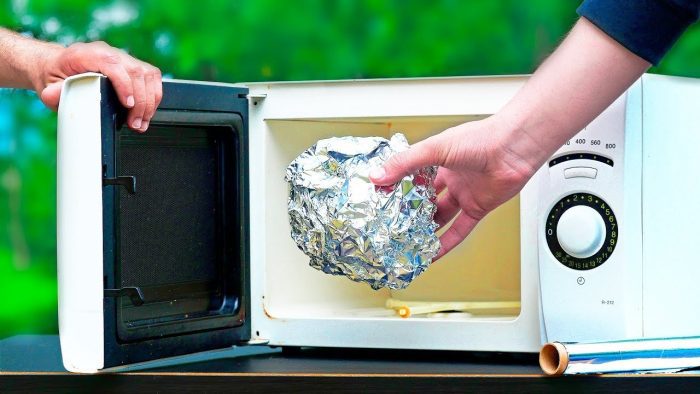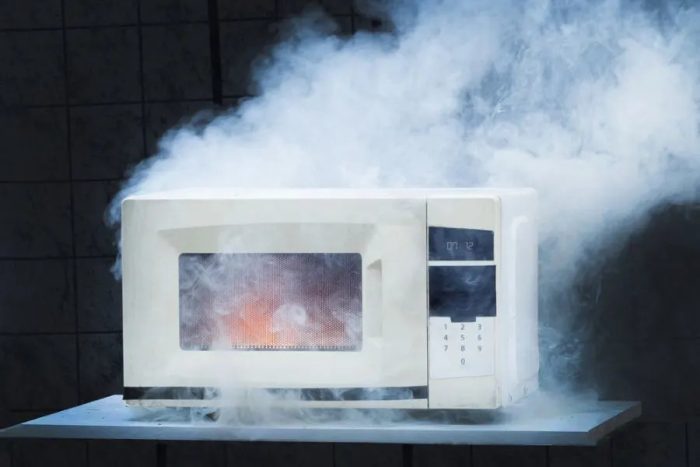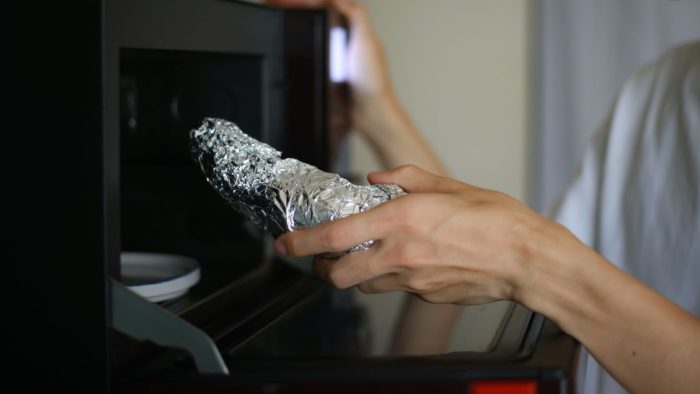If you are constantly hearing that it is not safe to put aluminum foil in the microwave or if you hear the opposite, that it is safe, it is no wonder that you are probably confused about which statement is true and which is false.
Well, as nothing in life is black and white only, I wrote this article regarding what happens if you microwave aluminum foil to put an end to the confusion once and for all. So if this sparks your curiosity and interest, keep reading.

What Happens if You Microwave Aluminum Foil?
There’s a lot of confusing information in the world, but when it comes to this, there is solid scientific evidence of what happens if you microwave aluminum foil.
Namely, to keep it short, putting aluminum foil in the microwave oven will most likely create an electric field. This electric field may even cause a fire.
Moreover, as this is a rather complicated process, we will look in great detail at what happens if you microwave aluminum foil. We will also see the connection between the microwave oven’s mechanism of work and its effect on aluminum foil.
What happens to aluminum foil in the microwave?
Namely, as aluminum foil acts as a reflecting surface, it will disrupt the synchronized bouncing of the microwaves, and they will start to go everywhere uncontrollably.
Moreover, the aluminum foil will create an electric field that the internal microwave circuits can not tolerate.
As a result, the electric currents will keep going around and bouncing to each other, creating massive heat. This heat can later burn the internal circuits of the microwave or even burn the foil and cause a fire.

How does the microwave oven affect the aluminum foil?
To better understand what happens if you microwave aluminum foil, you must know how a microwave oven works. Namely, their design contains a partial Faraday cage on five of its six sides, and it also utilizes a Faraday shield on the sixth side (the transparent window on the door). This design allows the microwaves to bounce inside the microwave to heat your food freely.
But, also ‘thanks’ to that design, putting aluminum foil in the microwave oven can be a bad idea as those microwaves will start reflecting on the foil and cause potential heat and even a fire.
Heating process step-by-step
When it comes to the heating process, there are three steps.
First, inside the microwave, there is a part called the magnetron tube responsible for producing microwaves. When you start the microwave, the magneton tube starts producing microwaves which will go around and be reflected by the metal walls until the food finally absorbs them.
In the second step of the heating process, when the microwaves reach the required wave frequency (2,450 megahertz / 2.45 gigahertz), the water molecules in your food start bouncing to each other.
Ultimately, after prolonged bouncing and vibrating of the water molecules in the food, they will create heat. And that is the heat that makes your food warm.
So, when you add aluminum foil to this process, a mess happens. Instead of the microwaves being absorbed by your food, they will keep reflecting off the aluminum foil, leaving you with cold food and a potentially seriously damaged microwave oven.

Which aluminum foil is more dangerous, the smooth one or the crinkled one?
The greatest danger of putting aluminum in the microwave comes from its shape. Suppose there are sharp aluminum edges, such as from a crinkled aluminum foil; the risk of fire increases. This is because any sharp metal object in the microwave can act as an antenna, and the electrons will gather in a massive amount there, resulting in the arcing effects in the microwave. If this is not stopped on time, there might be even danger of explosion.
That said, it does not mean that putting smooth and flat aluminum foil in the microwave is safe, but that crinkled foil can cause significantly more damage than a smooth one.
What if You Absolutely Must Use Aluminum Foil in the Microwave?
If you absolutely must use aluminum foil in the microwave, although that is not recommended, you should stay as safe as possible. Also, if on the aluminum foil, there is a label cautioning and strictly suggesting that you must not put the foil in the microwave, please respect that and do not put yourself and your closest ones in danger.
First, perform a test
If you still want and need to use aluminum foil or metal bowls after all this information, you must perform a few tests to see whether those materials can go into your microwave oven.
To perform these tests, you must read your microwave manual, as each model has different specifications. After following those tests, you see which materials your microwave can work with, and you are good to go. But, if in the manual it is strictly forbidden to put metal, aluminum foil, or any other potentially damaging material in the oven, please respect that and only use microwave-safe materials.
Look for microwavable foil
If you insist on using foil, you need to look for a label that says it is microwave safe. By purchasing this type of foil, you will be sure that you are not exposing yourself to danger and that you are using a safe material in the microwave.
Only use smooth and new foils
Even though you shouldn’t put aluminum foil in the microwave because it will make your food stay cold as it will act as a shield, if you insist on using it, at least ensure to always use only new and smooth foil. After doing this, you need to monitor the microwave carefully, and if you notice something is not right, immediately stop it and turn it off.
Check for metal turntable or shelving
Before trying to put aluminum foil in the microwave, you must check if your microwave’s turntable is metal or has any metal shelving inside it. If that is the case, you must not put aluminum foil inside the microwave under any circumstances.
